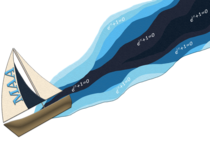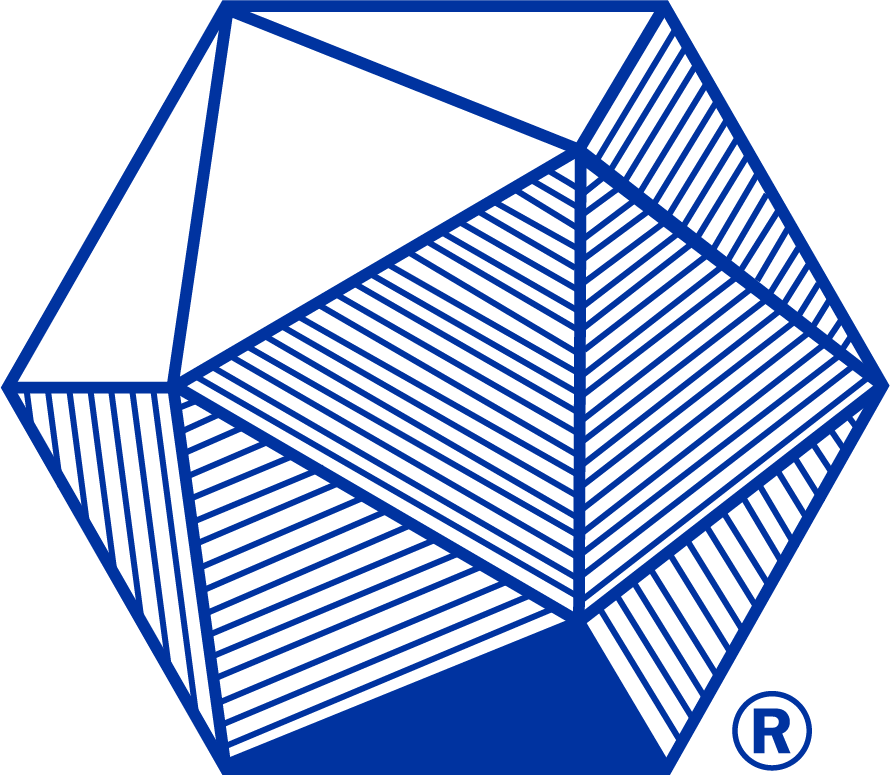Chapter 4: General Developments During the Second 25 Years
Separate chapters will be devoted to some of the items mentioned by Gunderson in his closing paragraph. Here, structural and organizational changes in the Seaway Section over the years will be described.
The shift from a single Section Meeting once a year to the present schedule of Fall and Spring Meetings did not come easily. The account of the Business Meeting in 1965 which was published in the MONTHLY contains the following ruminations: “Considerable debate arose over the time and place of future meetings. Spring is crowded with meetings many members attend. Fall also has its meetings, plus football games. The summer break would make program planning harder. No decisions were reached…” However, by 1966, B. H. Geer, for the Committee on Time of Meeting, moved that Fall Meetings would be held in addition to Spring Meetings, for two years on an experimental basis. Obviously, the experiment worked, and the two-meeting per year schedule has become standard since that time.
The expansion of the Section Meetings to two day affairs came somewhat later. On Friday evenings before Section Meetings, many of those who arrived early met informally at the host institution for a few hours of conversation, coffee and cookies. (Others, of course, sought out the local pubs.) Whether or not these gatherings were an official part of the Section Meeting was sometimes a source of misunderstanding between the host institutions and the Program Committee, particularly at those SUNY Colleges with limited or non-existent entertainment budgets. (Those not familiar with SUNY can hardly appreciate the machinations which were sometimes required to obtain several dollars from some dean to purchase a few pounds of coffee and sweets for an informal reception.) In an attempt to avoid such problems, Violet Larney of SUNY at Albany, Vice-Chair and Program Chair at the time, proposed holding an official Friday evening session consisting of a dinner meeting with an invited speaker. At the October 1977 Fall Meeting, this custom was instituted, albeit with much trepidation on the part of some of the Executive Committee, since it required committing some Section funds ahead of time. The fears proved to be unfounded, the banquet was a success, and such dinners have become a regular part of our Section Meetings since then. (As Gunderson's 24-year report shows, dinner meetings were a regular feature of the gatherings which were predecessors of our Section Meetings.)
As early as 1955 there was some embarrassment about the Section name. Indeed, when the proposed new By-Laws were adopted then, Chairman Rhodes pointed out that it might have been possible to find a new name of the section more descriptive of its geographical boundaries. At the Spring 1967 Business Meeting, Chairman Dick Wick Hall asked in amazement whether anyone had looked at a map of Ontario recently. He reminded us that it extends all the way to north of Minnesota! In preparing a revision to the By-Laws in 1971, a new name for the Upper New York State Section was finally proposed. (Probably only Chair Robert Sloan, Vice Chair Clarence Stephens and the author, then Secretary-Treasurer, knew until now that “Seaway Section” was Bob's wife's suggestion, arrived at after some fruitless efforts were spent trying to combine Ontario, Quebec and New York into some kind of clever acronym.)
The relationship between MAA and two-year college mathematics faculty members had at times been quite good, and at other times, quite the opposite. In the late 1960's and early 1970's, the national organization made an effort to accommodate the special needs of this group by taking over publication of the Two-Year College Journal, and by encouraging Sections to give some thought to how two-year faculty could become interested in participating in MAA. At the May 1970 Meeting, our Section set up an ad hoc Committee on InterCollege Relations to study problems and relations between two-year colleges and four-year colleges of the Section. Members were Paul Gilvert, Syracuse University; Calvin Lathan, Monroe CC; Malcolm Smiley, SUNY Albany; Lawrence Trivieri, Mohawk Valley CC; and John Vadney, Fulton-Montgomery CC. The committee renamed itself the Tw-Year College Committee, and presented its report and recommendations at the May 1971 Meeting. These included the creation of a new office in the Section, a Vice-Chairman for Tw-Year Colleges. Records of the November 1971 meeting indicate that problems of articulation of two-year colleges and other colleges were discussed at length.
At a special Business meeting at the 1971 Fall Meeting, new By-Laws were adopted, including a name change to “Seaway Section.” In response to the committee's recommendations, the new office of Second Vice-Chairman for Two-Year Colleges was established, as was a three-year term for the Secretary-Treasurer.
In Spring of 1972, Larry Trivieri was elected to this new position on the Executive Committee.
It may be of interest to note how Larry Trivieri became not only the first, but also the fourth Second Vice-Chairman for Two-Year Colleges. It seems that the Nominations Committee Chair, who shall be nameless here, became distracted when the Committee report was given at the Spring 1975 Business Meeting and blurted out Larry's name instead of that of the agreed upon nominee. Larry was dutifully elected again by voice vote, as is usually the case at Business Meetings, with none but a confused Nominations Committee, Larry and the other “nominee” aware of what had gone on. The Section Archives contains a sheepish letter from the Committee Chair about this incident. The original candidate, Richard Meili was finally elected to the position at the next Business Meeting for the following term. This perhaps explains why the Nominations Committee reports are now published in the Newsletter ahead of time.
The Fall 1972 Meeting was held at Mohawk Valley Community College. This was the first time that the Section had been invited to a community college for a meeting.
At the Fall Meeting of 1977, Section dues were abolished, and a registration fee of $3 for meetings was established.
Also, in Fall of 1977, the Section authorized publication of a newsletter on a trial basis for three years. Donald Trasher, of SUC at Geneseo, was appointed editor. The first issue appeared in Spring of 1978, and semi-annual issues have been published and mailed to membership of the Section since that time.
A typical issue of the Newsletter contains the program of the upcoming Section Meeting, a profile of the institution hosting the meeting, Section news, minutes of the previous business meeting, committee reports, news items from some of the campuses in the section, and announcements of future national and local meetings. Under the editorial direction of Professor Trasher, the Seaway Section Newsletter has developed into a valuable resource for Section members. Since the MONTHLY no longer publishes reports of meetings of the sections, the Newsletter is the only source of information about programs of our meetings and abstracts of papers presented at these meetings. (It is unclear where source material will be found when the Seaway Section prepares its 75th Anniversary History. Perhaps the Newsletters should be published on acid-free paper, or also on disks, for long-term future reference.)
In order to provide the opportunity for long range planning of activities of the Section by its officers, the By-Laws were revised in May of 1978. Except for the Secretary-Treasurer, the terms of the officers were expanded to two years, and, in contrast to past practice, the Executive Committee had considerable carry-over from year to year by staggering the terms of the officers. No longer did an officer spend much of the year learning what to do, only to be replaced by a new person who began the process all over again. The By-Laws also created the new positions of Chair-Elect and Immediate Past Chair. These modifications followed guidelines suggested by the national MAA's model By-Laws for Sections.
The Section has continued to demonstrate its interest in maintaining good relations with the two-year colleges in the area. Both the 1983 Spring Meeting in Utica and the 1985 Spring Meeting in Rochester were held in conjunction with meetings of the New York State Mathematics Association of Two-Year Colleges. (NYSMATYC)
In 1984, Edwin Hoefer of RIT became the Seaway Section representative for the Teaching Experiential Applied Mathematics Project. The project, funded jointly by MAA and NSF, involved production of a series of six modules on applied mathematics. Each module consisted of a booklet and a video-tape. Several schools in the Section used the material as mathematics club projects, and sometimes in classes to generate discussion of “real-world” mathematics. The project, apparently, is no longer funded at this time.
In Fall of 1988, the MAA began the process of establishing student chapters at colleges and universities throughout the country. Thomas Upson of R.I.T. has been appointed Coordinator of Student Chapter Activities for the Seaway Section. As of January 1, 1990, there are seven student chapters in the Section. Chapters have been founded at Alfred University, SUC at Fredonia, SUC at Geneseo, Russell Sage College, Rensselaer Polytechnic Institute, Syracuse University and Utica College. The chapter at Fredonia was the first in this Section to be established, and only the seventeenth student chapter in the entire nation. Three more schools are in the process of being organized at the time of this writing.
A joint resolution by the Executive Committees of the Metropolitan New York Section and the Seaway Section regarding the undergraduate college mathematical requirements for professional certification of New York State's elementary school teachers was drafted in the Fall of 1988. It was transmitted to the New York State Commissioner of Education and to the members of the Board of Regents of New York State.
The MAA has recently produced two sets of materials to promote awareness of mathematics and its applications for high school students. MAWIS, Mathematics at Work in Society, is designed for students in grades 8 and above. It includes four 20-minute television video cassettes and a 32 page project book. The goal of MAWIS is to promote career awareness in mathematics. AIM, Applications in Mathematics, is an integrated set of learning modules featuring problems from industry and is aimed at a similar audience. An AIM module consists of a three-part video tape discussing the problem, hints to get started, and finally the solution, together with a student resource book and a teacher resource book. According to Bruce Haney, the Section coordinator, the Section has possession of its own sets of video tapes for both of these projects, and those wishing to borrow them, or copy them, should contact him at Onondaga CC.
In contrast to 25 years ago, the Section membership now stands at 1428. With respect to finances, Section records contain a report from Mary Williams at the end of her term as Secretary-Treasurer showing a balance, as reported at the May 11, 1968 meeting, of $2.60. The October 1989 Section NEWSLETTER reports that the Section had $5,230.64 in its treasury as of October 1, 1989. Clearly, the Seaway Section is in good health, and is well-prepared to serve the mathematical community in the coming years.

